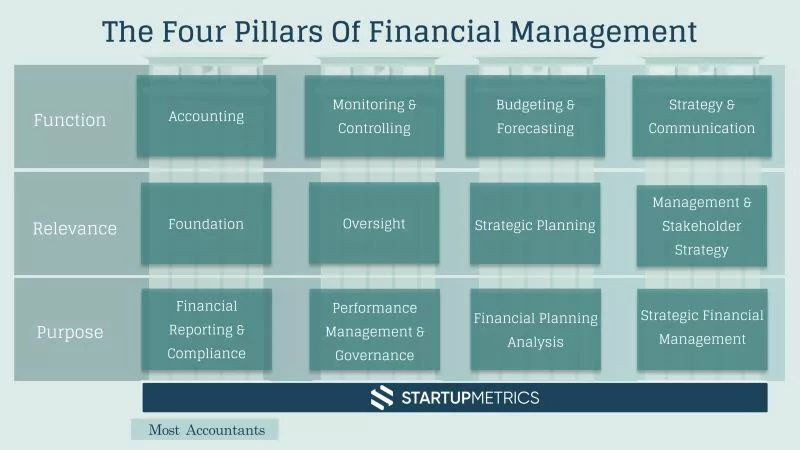The magic behind startup valuation in 2024
15.02.2023
Determining the fair startup valuation is a critical and complex process. While many practitioners argue that startup valuation is more of an art than a science, the reality is that valuing startups, particularly early-stage ones, is inherently challenging due to the lack of operational data. However, by understanding and applying key financial principles, you can objectively defend your startup valuation in transactions. This article explores the core elements that define the value of any company and the specific parameters relevant for early-stage ventures.
Core Elements of Startup Valuation
The value of a startup is determined by three core elements:
-
Free Cash Flow (FCF)
-
Exit Value (TV)
-
Return Expectation (r)
These elements are easier to estimate for established businesses with extensive operational histories. For startups, particularly early-stage ones, the challenge lies in estimating these values due to limited historical data. However, by leveraging business and market information, you can make informed estimates of FCF, TV, and expected return.
1. Free Cash Flow (FCF)
Free Cash Flow represents the cash generated by the business that is available for distribution to investors after accounting for operational expenses and capital expenditures. For early-stage ventures, estimating FCF involves understanding several underlying parameters:
Parameters Influencing FCF
- Market Potential:
- Assess the total addressable market (TAM) for your product or service. A larger market potential indicates a higher growth opportunity.
- Obtainable Market Share:
- Estimate the realistic market share your startup can capture based on competitive analysis and market conditions.
- Sales Cycle:
- Understand the length and complexity of the sales process. Shorter sales cycles can accelerate revenue generation.
- Customer Acquisition Costs (CAC):
- Calculate the cost of acquiring a new customer. Lower CAC improves profitability and FCF.
- Pricing:
- Determine your pricing strategy and how it impacts revenue. Competitive pricing can enhance market penetration and revenue.
- Net Retention Rate:
- Measure the ability to retain and upsell to existing customers. High retention rates indicate stable revenue streams.
- Variable Production Costs:
- Identify the costs directly associated with producing your product or service. Efficient cost management improves margins.
- R&D Expenses:
- Estimate ongoing research and development costs necessary to maintain and enhance your product.
- Operational Expenses:
- Account for general administrative expenses, including salaries, rent, and utilities. Efficient operations reduce overhead.
- Working Capital Requirement:
- Assess the capital needed to support day-to-day operations. Effective working capital management ensures liquidity.
2. Exit Value (TV)
Exit Value represents the projected value of the startup at the time of exit, such as through an acquisition or IPO. This value is influenced by revenue projections and industry-specific valuation multiples.
Parameters Influencing TV
- Revenue at Time of Exit:
- Forecast your revenue at the anticipated exit time. Strong revenue growth enhances exit value.
- Industry-Specific Valuation Multiples:
- Use valuation multiples relevant to your industry to estimate exit value. These multiples are often based on revenue or EBITDA.
3. Return Expectation (r)
Return Expectation reflects the required return for investors, taking into account perceived market and company-specific risks. Higher risks typically demand higher returns.
Parameters Influencing Return Expectation
- Market Risks:
- Evaluate external factors such as economic conditions, regulatory environment, and market competition.
- Company-Specific Risks:
- Assess internal factors including management team expertise, product development stage, and financial health.
Valuation Methods for Early-Stage Startups
To estimate the value of an early-stage startup, venture capitalists commonly use three valuation methods that do not rely heavily on financial projections:
- Payne Scorecard Method:
- This relative valuation approach compares the target company to a set of similar startups based on stage, geography, and industry. Variations occur due to differences in qualitative factors such as management team, market size, and product development stage.
- Comparable Transactions Method:
- This method uses the average valuation of similar startups that have recently undergone funding rounds or exits. It provides a market-based estimate of value by analyzing comparable companies.
- Cost-to-Duplicate Method:
- This approach calculates the theoretical value required to rebuild the startup from scratch, considering the time and resources needed. It is mainly used by strategic investors to make buy-or-build decisions.
Practical Example: Valuing a Tech Startup
Consider a tech startup, “InnoTech,” developing innovative software solutions for healthcare providers. Here’s how you might approach its valuation:
Estimating FCF
- Market Potential:
- The healthcare IT market is projected to reach $500 billion in the next five years. InnoTech aims to capture 2% of this market, translating to a potential market size of $10 billion.
- Customer Acquisition Costs (CAC):
- InnoTech’s CAC is estimated at $1,000 per customer. With an average customer lifetime value (CLV) of $10,000, the CAC/CLV ratio is favorable.
- Variable Production Costs:
- The cost to develop and maintain the software is $2 million annually, with anticipated reductions as the company scales.
Estimating TV
- Revenue at Time of Exit:
- InnoTech projects $50 million in annual revenue by year five.
- Industry-Specific Valuation Multiples:
- Healthcare IT companies typically trade at 5x revenue. Thus, InnoTech’s exit value is estimated at $250 million ($50 million revenue * 5).
Estimating Return Expectation
- Market Risks:
- Regulatory changes in healthcare can impact adoption rates, posing a moderate risk.
- Company-Specific Risks:
- The management team has a proven track record, and the product is well-received in pilot tests, suggesting lower company-specific risks.
Conclusion
Startup valuation is challenging but not insurmountable. By understanding and applying core valuation principles, you can objectively estimate the value of your startup. Focus on key parameters influencing FCF, TV, and return expectations, and use established valuation methods to provide a defensible valuation.
Whether you are negotiating with investors or preparing for an exit, a thorough understanding of your startup’s valuation will help you achieve fair and favorable outcomes. If you need assistance in valuing your startup, contact us. We offer tailored valuation services to help you navigate the complexities of startup financing and growth.
